Malcolm R. Campbell's Blog, page 42
November 5, 2022
If I’d Been a Career 8000-meter Peak Mountain Climber, I’d probably be Dead by Now
 I started reading accounts of mountain ascents and attempted ascents when I was in junior high because my father, who climbed mountains in college as I did later, had most of the classic accounts. My target peak was K2, the second-highest mountain in the world, and considered more difficult than Everest. The fatality rate on that peak is about 25%.
I started reading accounts of mountain ascents and attempted ascents when I was in junior high because my father, who climbed mountains in college as I did later, had most of the classic accounts. My target peak was K2, the second-highest mountain in the world, and considered more difficult than Everest. The fatality rate on that peak is about 25%.
In fact, like the successful American climber Ed Viesturs, I wanted to summit all fourteen of the world’s 8,000-meter peaks without supplemental oxygen. There have been many bad years on these mountains in the Himalayas and Karakoram ranges, so why go there?
I have no answer, really, because I never made it to any summits higher than Colorado’s 14,0000-foot peaks, some of which my father climbed years before.
I did have an opportunity to trek in to the Base Camp at Everest, but the money fell thought at the last minute.
You have to push yourself on these climbs and know when to trust your instincts when everything about the mountain is against you, especially above the so-called “Death Zone” at 26,000 feet, above which the atmosphere isn’t conducive to long-term survival.
Perhaps pushing oneself is the rationale behind climbing. It was for me because truth be told, one doesn’t have a lot of time for the view. It amazes me, though, how the dreams of a high school student can be just as vital now as they were then. Do you have dreams like that? Things you wanted to do and mourn not doing?
Malcolm
November 4, 2022
Today, 35K people are blogging for peace
 “When your fight has purpose—to free you from something, to interfere on the behalf of an innocent—it has a hope of finality. When the fight is about unraveling—when it is about your name, the places to which your blood is anchored, the attachment of your name to some landmark or event—there is nothing but hate, and the long, slow progression of people who feed on it and are fed it, meticulously, by the ones who come before them. Then the fight is endless, and comes in waves and waves, but always retains its capacity to surprise those who hope against it.” – ― Téa Obreht, The Tiger’s Wife
“When your fight has purpose—to free you from something, to interfere on the behalf of an innocent—it has a hope of finality. When the fight is about unraveling—when it is about your name, the places to which your blood is anchored, the attachment of your name to some landmark or event—there is nothing but hate, and the long, slow progression of people who feed on it and are fed it, meticulously, by the ones who come before them. Then the fight is endless, and comes in waves and waves, but always retains its capacity to surprise those who hope against it.” – ― Téa Obreht, The Tiger’s Wife
(I’m not an official blogger for peace, check Mimi Writes if you want to be a member and use the official logos.)
The quote from Téa Obreht suggests one reason why war is so difficult to stamp out.
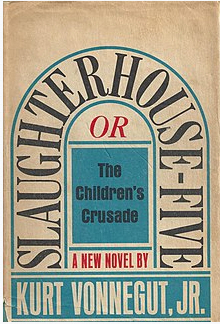 My introduction to the realities of war came from reading All Quiet on the Western Front when I was in high school. I found this novel to be so graphic, I could not comprehend how anyone who fought in a war, observed a war or read that book could possibly support any politician calling for war. I won’t read it again.
My introduction to the realities of war came from reading All Quiet on the Western Front when I was in high school. I found this novel to be so graphic, I could not comprehend how anyone who fought in a war, observed a war or read that book could possibly support any politician calling for war. I won’t read it again.
I felt the same way after reading the equally repellant Johnny Got His Gun. “Hawks,” I wanted to say, “this is what war does to people.” Along with many others, I learned about the unnecessary and immoral firebombing of Dresden when I read Slaughterhouse Five. Cynically, I wondered how many of those who raged at Sherman’s approach to war thought what we did to Dresden was somehow justifiable.
We don’t always hear the anguished stories of those who fight and return because they can’t or won’t talk about what happened over there. I’ve written elsewhere that I think the real casualties are those who survive so that they can go through the hell of the battle every night in their dreams. Perhaps we learn a little from war reporting, and later from historical novels and nonfiction accounts. Perhaps if we spent one day in Ukraine, we would become doves forever; but I doubt it.
 Dresden, where 25,000 people were slaughtered.
Dresden, where 25,000 people were slaughtered.
Kurt Vonnegut, wrote in, Slaughterhouse-Five, “You know — we’ve had to imagine the war here, and we have imagined that it was being fought by aging men like ourselves. We had forgotten that wars were fought by babies. When I saw those freshly shaved faces, it was a shock. ‘My God, my God — ‘ I said to myself, ‘It’s the Children’s Crusade.'”
And so it usually is. We imagine there’s glory in it. There is not. The idea of glory is the sham that sends the babies off to fight and that celebrates their work if they return. They never return, actually, because they will never mentally escape the slaughterhouse of battlefields and the cities like Dresen that got in the way.
Perhaps if we listened to their nightmares and shared their PTSD, we could become doves forever and–as we used to say (and sing)–“give peace a chance.”
When it comes to a prospective war, your thoughts about the wrongness of it matter.
–Malcolm
 Malcolm R. Campbell is the author of the Vietnam War novel At Sea.
Malcolm R. Campbell is the author of the Vietnam War novel At Sea.
November 3, 2022
Etc. and &c.
 Fabiola Valentín (Miss Puerto Rico 2020) and Mariana Varela (Miss Argentina 2020) – CNN Photo
Fabiola Valentín (Miss Puerto Rico 2020) and Mariana Varela (Miss Argentina 2020) – CNN Photo
According to CNN, “A former Miss Argentina and former Miss Puerto Rico shocked and delighted fans by announcing their surprise marriage on Instagram.” I don’t claim to understand it, but I do like imagining the horror of some who hear the news. In fact, some people will be so ticked off, they’ll probably whine on Facebook that they weren’t consulted. They did check with me and I said it was all right.
Just in case it matters, I’m drinking Scotch while writing this post. I’m usually drinking red wine, but I got so excited about the news from Fabiola and Marianna, I broke out the good stuff.Our HRV finally starts up now that the dealership sheepishly admitted that they had sent the car out the door without checking the battery–which turned out to be crap. Yahoo “news” reports that we can “Save on JLo’s Booty Balm and other celeb faves at Sephora’s Beauty Insider sale.” I lived my whole life without knowing there was a product out there called Booty Balm and wish I were still innocent. Seriously, do people need to hydrate their butts? This stuff is supposed to fade imperfections for a “smoother-looking booty.” And, it’s clinically tested, so we know this product is based on science rather than magical thinking. I notice, however, that when I was looking at the Booty Balm ad, I didn’t see any before and after photographs of treated Booty.
Yahoo “news” reports that we can “Save on JLo’s Booty Balm and other celeb faves at Sephora’s Beauty Insider sale.” I lived my whole life without knowing there was a product out there called Booty Balm and wish I were still innocent. Seriously, do people need to hydrate their butts? This stuff is supposed to fade imperfections for a “smoother-looking booty.” And, it’s clinically tested, so we know this product is based on science rather than magical thinking. I notice, however, that when I was looking at the Booty Balm ad, I didn’t see any before and after photographs of treated Booty. Fox News reported that “Biden blasted for new warning about ‘threats to democracy in midterms: ‘Their rhetoric is all a sham'” “During Wednesday night’s address, Biden focused his rhetoric on Republicans, asking Americans to vote for Democrats to protect democracy.” I like the old days when both major parties were trying to protect democracy. My feeling is that both parties have gone over the edge. And so have the news organizations that worship them.
Fox News reported that “Biden blasted for new warning about ‘threats to democracy in midterms: ‘Their rhetoric is all a sham'” “During Wednesday night’s address, Biden focused his rhetoric on Republicans, asking Americans to vote for Democrats to protect democracy.” I like the old days when both major parties were trying to protect democracy. My feeling is that both parties have gone over the edge. And so have the news organizations that worship them. According to the Associated Press, “Musk: People banned from Twitter won’t be restored for weeks.” The story says that “Elon Musk said Wednesday that Twitter will not allow anyone who has been kicked off the site to return until it sets up procedures on how to do that, a process that will take at least a few weeks.” For me, this info is filed under the I don’t care category. I don’t need Twitter to survive.The New York Times reports that “The New Covid Boosters Are Incredible, and Everyone Should Get One.” I can’t say any more about it because the dreaded paywall showed up before I could read the editorial column. I have no idea whether the author works for Pfizer or Moderna or the CDC. I’m not rushing out for a shot (other than Scotch).
According to the Associated Press, “Musk: People banned from Twitter won’t be restored for weeks.” The story says that “Elon Musk said Wednesday that Twitter will not allow anyone who has been kicked off the site to return until it sets up procedures on how to do that, a process that will take at least a few weeks.” For me, this info is filed under the I don’t care category. I don’t need Twitter to survive.The New York Times reports that “The New Covid Boosters Are Incredible, and Everyone Should Get One.” I can’t say any more about it because the dreaded paywall showed up before I could read the editorial column. I have no idea whether the author works for Pfizer or Moderna or the CDC. I’m not rushing out for a shot (other than Scotch). According to a roundtable on The Onion, “As the oldest commander-in-chief in the history of our republic, the current president’s age demands a vigorous discussion to settle the question: Should President Joseph R. Biden run again?” This seems to be the consensus: “So go ahead and spit on me. Strangle me. Strip me naked and dog-walk me across the cement floor on a metal leash. Threaten my wife and children. Hell, murder my entire family. Nothing—nothing—will break my resolve. I will never reveal whether I believe Biden will have the mental and physical ability at 81 years of age to retain the most powerful office in the world.”
According to a roundtable on The Onion, “As the oldest commander-in-chief in the history of our republic, the current president’s age demands a vigorous discussion to settle the question: Should President Joseph R. Biden run again?” This seems to be the consensus: “So go ahead and spit on me. Strangle me. Strip me naked and dog-walk me across the cement floor on a metal leash. Threaten my wife and children. Hell, murder my entire family. Nothing—nothing—will break my resolve. I will never reveal whether I believe Biden will have the mental and physical ability at 81 years of age to retain the most powerful office in the world.”Well, there it is, the state of the nation at 4:57 EDT on 11/3/22.
–Malcolm
November 2, 2022
Rereading ‘The Tiger’s Wife’ by Téa Obreht
 Several days ago, I posted some ideas that a story happens in a place and can be revisited like any tourist destination. I especially like returning to places filled with magical realism since I often write in that genre. So it is that I decided to reread The Tiger’s Wife which NPR reviewed as Magical Realism Meets Big Cats.
Several days ago, I posted some ideas that a story happens in a place and can be revisited like any tourist destination. I especially like returning to places filled with magical realism since I often write in that genre. So it is that I decided to reread The Tiger’s Wife which NPR reviewed as Magical Realism Meets Big Cats.
I’m rereading the book now because I wanted to take another look at it before finally getting around to reading Inland, a novel set in the American Southwest.
NPR wrote that “The Tiger’s Wife rests securely in the genre of magical realism, inciting comparisons to Gabriel Garcia Marquez and even Kafka.” The reviewer thought that the ending was too abrupt. I didn’t in my April 2011 review: “The Tiger’s Wife is dark and deep and perfectly crafted, and if you allow yourself to be immersed in it, you will see the blazing eyes of Shere Khan.” The novel won the Orange Prize for Fiction and was a 2011 National Book Award finalist.
From the Publisher Author’s Website
Author’s Website
“Weaving a brilliant latticework of family legend, loss, and love, Téa Obreht, the youngest of The New Yorker’s twenty best American fiction writers under forty, has spun a timeless novel that will establish her as one of the most vibrant, original authors of her generation.
In a Balkan country mending from war, Natalia, a young doctor, is compelled to unravel the mysterious circumstances surrounding her beloved grandfather’s recent death. Searching for clues, she turns to his worn copy of The Jungle Book and the stories he told her of his encounters over the years with “the deathless man.” But most extraordinary of all is the story her grandfather never told her—the legend of the tiger’s wife.”
–
Téa Obreht was born Tea Bajraktarević in the autumn of 1985, in Belgrade, SR Serbia, SFR Yugoslavia, the only child of a single mother, Maja Obreht, while her father, a Bosniak,[10] was “never part of the picture.” – Wikipedia .
–Malcolm
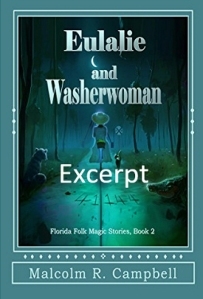 Malcolm R. Campbell is the author of Eulalie and Washerwoman, magical realism set in the backwoods of the Florida Panhandle in the 1950s.
Malcolm R. Campbell is the author of Eulalie and Washerwoman, magical realism set in the backwoods of the Florida Panhandle in the 1950s.
October 30, 2022
Sunday’s mixed bag
 The Lords of Discipline by Pat Conroy has been the perfect book for re-reading on this dour Sunday afternoon. In the novel, we read of the terror of attendance at the “Carolina Military Institute.” So many people–including the Citadel’s top brass, I suppose–saw the 1980 novel as a veiled and not very flattering account of education at the Citadel. So, they banned him from the campus for two decades. Conroy is my favorite author and I much prefer South of Broad and The Prince of Tides to this novel.I can’t remember what online vendor it was, but when they delivered a package at about 7:30 p.m., they sent my wife a picture of the box sitting on the welcome mat. That’s a first. Too bad the photo didn’t include Robbie (cat) standing by the box while glaring at the camera and hissing at the interloper who dared to step up on our front porch.
The Lords of Discipline by Pat Conroy has been the perfect book for re-reading on this dour Sunday afternoon. In the novel, we read of the terror of attendance at the “Carolina Military Institute.” So many people–including the Citadel’s top brass, I suppose–saw the 1980 novel as a veiled and not very flattering account of education at the Citadel. So, they banned him from the campus for two decades. Conroy is my favorite author and I much prefer South of Broad and The Prince of Tides to this novel.I can’t remember what online vendor it was, but when they delivered a package at about 7:30 p.m., they sent my wife a picture of the box sitting on the welcome mat. That’s a first. Too bad the photo didn’t include Robbie (cat) standing by the box while glaring at the camera and hissing at the interloper who dared to step up on our front porch. I see this free and downloadable magazine “Learning Justice” from the Southern Poverty Law Center as an excellent chance to consider how teaching should be happening in our schools. According to the center, “Current censorship efforts and attacks on inclusive schools show that education is indeed the battlefield for justice, and the new issue of Learning for Justice magazine highlights the fact that the fight for democracy is built on intersecting struggles for justice.” (Download your copy of Issue 3, Fall 2022 Learning for Justice magazine: https://bit.ly/3gEXeBg ) I’ve been a supporter of the SPLC since its 1971 founding with Julian Bond as its first president.”
I see this free and downloadable magazine “Learning Justice” from the Southern Poverty Law Center as an excellent chance to consider how teaching should be happening in our schools. According to the center, “Current censorship efforts and attacks on inclusive schools show that education is indeed the battlefield for justice, and the new issue of Learning for Justice magazine highlights the fact that the fight for democracy is built on intersecting struggles for justice.” (Download your copy of Issue 3, Fall 2022 Learning for Justice magazine: https://bit.ly/3gEXeBg ) I’ve been a supporter of the SPLC since its 1971 founding with Julian Bond as its first president.”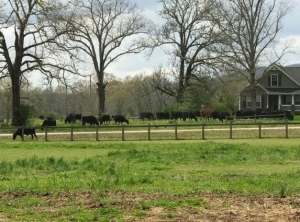 If you’re a constant visitor on Facebook, you’ll remember seeing photographs people took years ago under the designation of FBT (Fall Back Thursday.) One of my favorite FBT pictures shows what happened a lot when we first moved here since the fence around the adjoining pasture was always falling down. The most fun comes when the cows get out at night and we all go out to round them up in the dark when we can hardly see them. Seriously, you don’t want these heavy critters in the yard because they create mini-potholes wherever they go. Those play havoc with the riding mower for weeks.
If you’re a constant visitor on Facebook, you’ll remember seeing photographs people took years ago under the designation of FBT (Fall Back Thursday.) One of my favorite FBT pictures shows what happened a lot when we first moved here since the fence around the adjoining pasture was always falling down. The most fun comes when the cows get out at night and we all go out to round them up in the dark when we can hardly see them. Seriously, you don’t want these heavy critters in the yard because they create mini-potholes wherever they go. Those play havoc with the riding mower for weeks. In a recent post called A character is alive or dead or both until the scene is written I said that I was avoiding writing a scene because I didn’t want to character to die. I reasoned–as in the famous Schrödinger’s cat is a thought experiment–that the character wasn’t really dead until I wrote the scene. Okay, I wrote the scene with only three fingers of Scotch to help me make it through the night. Okay, now I can mow I can move on. If my publisher is reading this post, she now knows why I don’t turn out books like hashbrowns at a Waffle House.
In a recent post called A character is alive or dead or both until the scene is written I said that I was avoiding writing a scene because I didn’t want to character to die. I reasoned–as in the famous Schrödinger’s cat is a thought experiment–that the character wasn’t really dead until I wrote the scene. Okay, I wrote the scene with only three fingers of Scotch to help me make it through the night. Okay, now I can mow I can move on. If my publisher is reading this post, she now knows why I don’t turn out books like hashbrowns at a Waffle House. We recently purchased a 2019 Honda HRV because our 2006 Focus wouldn’t start. So, what happened the first time we wanted to go somewhere in the car? Right, it wouldn’t start. The dealer said to jump-start it and bring it in. They figure it just needs a new battery. We figure: (a) that they should have checked the battery before we drove it off the lot, and (b) that they should have driven over to our house to fix the problem rather than saying, “hey, just dump the sonofabitch off and bring it back to the dealership.” I think my wife told them on the phone that that wasn’t the image of customer service they presented to us when we were buying the car. I think the vibes coming from all those cows damage the electrical systems of cars that have sensitive computer systems.
We recently purchased a 2019 Honda HRV because our 2006 Focus wouldn’t start. So, what happened the first time we wanted to go somewhere in the car? Right, it wouldn’t start. The dealer said to jump-start it and bring it in. They figure it just needs a new battery. We figure: (a) that they should have checked the battery before we drove it off the lot, and (b) that they should have driven over to our house to fix the problem rather than saying, “hey, just dump the sonofabitch off and bring it back to the dealership.” I think my wife told them on the phone that that wasn’t the image of customer service they presented to us when we were buying the car. I think the vibes coming from all those cows damage the electrical systems of cars that have sensitive computer systems.–Malcolm
October 27, 2022
Why stuff is worse than it seems
If you follow objective news sources–and that takes a lot of looking–you’ll know more than most people about the issues you’re passionate about. But that would be a 24/7/365 job, and who can spare the time? So whenever I click on a website like Pen America or the National Parks and Conservation Association after a long absence, I always find that the issues these sites track are in worse condition than they seem. I blame Schrödinger for this because stuff getting worse is too scary for me to take 100% responsibility for its status.
Of course, if you don’t look at the websites or read the news, there aren’t any issues. Schrödinger and his cat taught us that. Most the people arguing about issues on Facebook and never checked out the websites, much less read/watched objective news. Experience teaches us that.
Truth be told, I think we can be passionate about a lot of issues, but need pragmatic restraint in choosing which ones to study in depth. I gravitate toward conservation groups and press freedom groups. This morning, I realized that I hadn’t been out to read anything on the Freedom of the Press Foundation site for a while. As the home page says, “Freedom of the Press Foundation protects, defends, and empowers public-interest journalism in the 21st century.”
I come from a family of journalists and followed in their footsteps. But even if I hadn’t, I would still support strong, neutral, and comprehensive journalism. Without it, we’ll have trouble maintaining our democracy because the only thing people would know would be the propaganda that comes from their political party of choice–and the “news” sites that support it blindly.
There’s been a lot in the news lately about the erosion of our freedoms of speech and press. Obviously, I’m aware of that. But when I looked at the foundation’s site, I discovered that stuff is worse than it seems.
Outrageous social media laws await Supreme CourtIn its quest to censor war reporting, the Russian government has dismantled all semblance of press freedomNewsworthy leaks under attack in LACongress has a historic chance to protect journalists and whistleblowers in this year’s defense authorization billSupreme Court ruling limits paths for journalists to hold federal officers accountableThe extradition of Julian Assange must be condemned by all who believe in press freedomExploiting tragedy: Police in Uvalde and Buffalo clamp down on free pressWhy press protections need legislative teeth, in DOJ’s own wordsWe take our freedom of speech and press as a given. So I don’t think it occurs to us that powerful groups, state and local governments, and federal agencies and individuals are constantly nibbling away at them. Most of us are aware of a lot of this, but cannot always cite specific examples. I look at this list and hope that I can make time to check the website at least once a week.
If things are getting worse, we can only speak out if we’re aware of them and how/why they are getting worse.
October 25, 2022
A character is alive or dead or both until the scene is written
If Schrödinger’s cat were my cat, I’d never open the box. I feel the same about a scene in my novel in progress in which Character A tells Character B that Character C is dead. I don’t want Character C to be dead, so I keep tinkering with other parts of the novel rather than writing that scene. (For those of you who worry about such things, Character C is not Lena the cat.)
 Schrödinger proposed the cat in the box thought experiment in 1935 to illustrate the problems he saw with the Copenhagen interpretation of Quantum mechanics. In this interpretation, the cat will be neither dead nor alive until the box is opened. I prefer the Many Worlds interpretation of quantum mechanics because it makes more sense to me than the other ways of looking at the world. But it doesn’t solve my problem because it suggests the cat is both alive and dead when the box is opened and that each version will spin off into a different universe as the cat and the observer become entangled. The universes and those within them are not aware of each other.
Schrödinger proposed the cat in the box thought experiment in 1935 to illustrate the problems he saw with the Copenhagen interpretation of Quantum mechanics. In this interpretation, the cat will be neither dead nor alive until the box is opened. I prefer the Many Worlds interpretation of quantum mechanics because it makes more sense to me than the other ways of looking at the world. But it doesn’t solve my problem because it suggests the cat is both alive and dead when the box is opened and that each version will spin off into a different universe as the cat and the observer become entangled. The universes and those within them are not aware of each other.
Suffice it to say, I’m not writing a novel that branches into two sections, one that you read if you think the character is dead and the other if you think the character is alive. I’ve done things like that in the past with my fiction and readers don’t want to go there. If I did go there, new universes would form, one in which readers finish the book and one in which they don’t.
Now that I’ve clarified the arena where my probable scene remains in limbo, you no doubt understand why I have not written that scene. At present, I either write the scene or I don’t. Either way, the probable universes are infinite.
Unfortunately, the plot–to the extent that I even know it–doesn’t work if Character C is alive.
Perhaps Character C can appear to die but still be around. I don’t think the Many Worlds interpretation allows for that. Or, maybe that happens in a third universe.
Right now, of course, there’s a universe of people who read this post and another one with people who didn’t. I have no control over that because that’s simple reality. As you can see, the role of the writer in this world (or any world) is more complex than it seems.
 Malcolm R. Campbell is either sane or insane. Until he’s released from the asylum, he continues to write books like Sarabande.
Malcolm R. Campbell is either sane or insane. Until he’s released from the asylum, he continues to write books like Sarabande.
October 24, 2022
Our stories are like tourist destinations
If you’re a writer or a reader and have time to spare, I hope you’ll spend a few moments considering Sofia Samatar’s “Fiat Lux: On Literary Atmospheres” on the “Poets And Writers” Website. It’s one of their series of craft capsules.
At my age, I usually avoid these craft capsules because I know that the good and bad things I do with words will continue because, really, I’m not going to change. I almost didn’t read this article, but after a few words, I was hooked.
Words create places just as surely as the universe creates a river or a mountain. As Samatar puts it, “To write is to generate a space, with its topography, its temperature, the quality of its air.”
This is what we do when we tell a story.
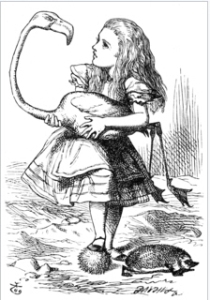 Reality? Yes, I think so.
Reality? Yes, I think so.
And like any other tourist destination, it is–for the reader–a real place just as surely as the Grand Canyon and Glacier National Park are living and breathing locations. And like these places which we may visit more than once, we can visit stories more than once.
As Samatar sees it, “A question of rereading. Once you know what a book contains, why read it again? Because literature is not information. It’s an atmosphere, a location, a space, a landscape you can enter, with its own weather and light that can be found nowhere else.” And also: “Rereading means returning to a landscape: running down ill-lit streets, gliding through radiant fields, climbing up mountains buffeted by the wind.”
Every time I visit a place, whether it’s a friend’s or relative’s house or a widely known location in a travel guide, I see what I missed the last time I was there. The same is true of a novel or a story. It may seem finite inasmuch as the words on the page are the same every time I return. But I am not the same. I experience the story differently every time I re-read it; or, perhaps, I find myself interested in chapters and sections that didn’t wholly capture my attention the first or second or third time through the material.
As writers, we create real places we hope others will visit and one day return to for another look.
–Malcolm
October 23, 2022
Sunday’s Miscellany
 I’ve started another Kathy Reichs book, this one titled The Bone Code, and am finding these fun to read. Booklist says this 2021 novel is “A-game Reichs, with crisp prose, sharp dialogue, and plenty of suspense.” It’s a nice change of pace from Dan Brown’s Inferno which I just re-read and a welcome distraction from the mid-1950s resources about the KKK in Florida (mentioned in yesterday’s post). Hmm, it feels a bit warped saying a book about the autopsies of badly messed up people (think of the TV show “Bones”) is a lightweight distraction from KKK atrocities.It appears that using Grammarly is making my bad spelling and copy editing worse because now I don’t have to try to spell the words right when an approximation of the word brings me the correct spelling out of nowhere.
I’ve started another Kathy Reichs book, this one titled The Bone Code, and am finding these fun to read. Booklist says this 2021 novel is “A-game Reichs, with crisp prose, sharp dialogue, and plenty of suspense.” It’s a nice change of pace from Dan Brown’s Inferno which I just re-read and a welcome distraction from the mid-1950s resources about the KKK in Florida (mentioned in yesterday’s post). Hmm, it feels a bit warped saying a book about the autopsies of badly messed up people (think of the TV show “Bones”) is a lightweight distraction from KKK atrocities.It appears that using Grammarly is making my bad spelling and copy editing worse because now I don’t have to try to spell the words right when an approximation of the word brings me the correct spelling out of nowhere. I’m happy to report that after four days, our new Black & Decker drip coffee maker is still working. In years past, I used to write the birth and death dates of our coffee makers on the engagement calendar to track how long they lasted. Yes, I know, in this Internet age, we’re totally old-fashioned using an engagement calendar. I suppose the fact that I use this kind of coffee pot with Maxwell House coffee is another habit that proves I’m old-fashioned. But then, what do you expect from an old guy?
I’m happy to report that after four days, our new Black & Decker drip coffee maker is still working. In years past, I used to write the birth and death dates of our coffee makers on the engagement calendar to track how long they lasted. Yes, I know, in this Internet age, we’re totally old-fashioned using an engagement calendar. I suppose the fact that I use this kind of coffee pot with Maxwell House coffee is another habit that proves I’m old-fashioned. But then, what do you expect from an old guy? Here’s an example of writing about one’s traumas in order to help people suffering through similar experiences: “She survived a mass shooting — then created a graphic novel to help others.” More and more writers and readers seem to be discovering this truth nowadays. “It took Kindra Neely years to seek help. Seven years ago, she survived the mass shooting at Umpqua Community College in Oregon, where a gunman killed eight students and one professor, and injured eight more. She has now shared her experience in a debut graphic novel, Numb to This: Memoir of a Mass Shooting, hoping that it will help others.”
Here’s an example of writing about one’s traumas in order to help people suffering through similar experiences: “She survived a mass shooting — then created a graphic novel to help others.” More and more writers and readers seem to be discovering this truth nowadays. “It took Kindra Neely years to seek help. Seven years ago, she survived the mass shooting at Umpqua Community College in Oregon, where a gunman killed eight students and one professor, and injured eight more. She has now shared her experience in a debut graphic novel, Numb to This: Memoir of a Mass Shooting, hoping that it will help others.” As most of you know, I’m cheap and buy swill-level red wine at the grocery short for $10 or less for a 1.5 L size. So it bothers me when the Biltmore House tempts me with a wine sale that includes free shipping from Asheville. I’m not a fan of the so-called standard 750 ml bottle because it’s an expensive way to buy wine. And yet, Cardinal’s Crest is my favorite. We’ve been going to the Biltmore Estate since the 1980s and always stop by the winery to stock up on good stuff to drink. We don’t go for the wine, of course, but for the beauty of the estate and the history and architecture of the Biltmore House. If you’re ever in Asheville, NC, you must stop by this wonderful tourist destination for a visit even though it’s a bit pricey. It’s well worth the time and cost
As most of you know, I’m cheap and buy swill-level red wine at the grocery short for $10 or less for a 1.5 L size. So it bothers me when the Biltmore House tempts me with a wine sale that includes free shipping from Asheville. I’m not a fan of the so-called standard 750 ml bottle because it’s an expensive way to buy wine. And yet, Cardinal’s Crest is my favorite. We’ve been going to the Biltmore Estate since the 1980s and always stop by the winery to stock up on good stuff to drink. We don’t go for the wine, of course, but for the beauty of the estate and the history and architecture of the Biltmore House. If you’re ever in Asheville, NC, you must stop by this wonderful tourist destination for a visit even though it’s a bit pricey. It’s well worth the time and cost–Malcolm
October 22, 2022
Four of Florida’s darker moments
When I research civil rights issues for the novel in progress, some of what I’m looking at happened while I was growing up there, and seeing it brings back vague memories of stories I saw in the newspaper. I often wonder if Florida’s current residents hear about these incidents in high school and college history classes. Sad to say, these four incidents aren’t the sum of the KKK violence in the state in the past. The first two happened before I was in Florida but were very much part of the conversation. Each of the blurbs below comes from Wikipedia.
Rosewood MassacreThe Rosewood massacre was a racially motivated massacre of black people and the destruction of a black town that took place during the first week of January 1923 in rural Levy County, Florida, United States. At least six black people and two white people were killed, though eyewitness accounts suggested a higher death toll of 27 to 150. The town of Rosewood was destroyed in what contemporary news reports characterized as a race riot. Florida had an especially high number of lynchings of black men in the years before the massacre,[2] including a well-publicized incident in December 1922.
Before the massacre, the town of Rosewood had been a quiet, primarily black, self-sufficient whistle-stop on the Seaboard Air Line Railway. Trouble began when white men from several nearby towns lynched a black Rosewood resident because of accusations that a white woman in nearby Sumner had been assaulted by a black drifter. A mob of several hundred whites combed the countryside hunting for black people and burned almost every structure in Rosewood. For several days, survivors from the town hid in nearby swamps until they were evacuated to larger towns by train and car. No arrests were made for what happened in Rosewood. The town was abandoned by its former black and white residents; none of them ever moved back, none of them were ever compensated for the loss of their land, and the town ceased to exist.
Groveland FourThe Groveland Four (or the Groveland Boys) were four African American men, Ernest Thomas, Charles Greenlee, Samuel Shepherd, and Walter Irvin. In July 1949, the four were accused of raping a white woman and severely beating her husband in Lake County, Florida. The oldest, Thomas, tried to elude capture and was killed that month. The others were put on trial. Shepard and Irvin received death sentences, and Greenlee was sentenced to life in prison. The events of the case led to serious questions about the arrests, allegedly coerced confessions and mistreatment, and the unusual sentencing following their convictions. Their incarceration was exacerbated by their systemic and unlawful treatment—including the death of Shepherd, and the near-fatal shooting of Irvin. Greenlee was paroled in 1962 and Irvin in 1968. All four were posthumously exonerated by the state of Florida in 2021.
Murder of Activist Harry T. Moore Excellent resource from 1999.
Excellent resource from 1999.
Harry Tyson Moore (November 18, 1905 – December 25, 1951) was an African-American educator, a pioneer leader of the civil rights movement, founder of the first branch of the National Association for the Advancement of Colored People (NAACP) in Brevard County, Florida, and president of the state chapter of the NAACP.
Harry T. Moore and his wife, Harriette Moore, also an educator, were the victims of a bombing of their home in Mims, Florida, on Christmas night 1951. As the local hospital in Titusville would not treat Blacks, he died on the way to the nearest one that would, a Black hospital in Sanford, Florida, about 30 miles to the northwest. His wife died from her wounds nine days later, on January 3, 1952, at the same hospital. This followed their both having been fired from teaching because of their activism.
The murder case was investigated, including by the FBI in 1951–1952, but no one was ever prosecuted. Two more investigations were conducted in the 1970s and 1990s. A state investigation and forensic work in 2005–2006 resulted in naming the likely perpetrators as four Ku Klux Klan members, all long dead by that time. Harry T. Moore was the first NAACP member and official to be assassinated for civil rights activism; the couple are the only husband and wife to be killed for the movement. Moore has been called the first martyr of this stage of the civil rights movement that expanded in the 1960s.
The Tyranny of Sheriff Willis McCallWillis Virgil McCall (July 21, 1909 – April 28, 1994) was sheriff of Lake County, Florida. He was elected for seven consecutive terms from 1944 to 1972. He gained national attention in the Groveland Case in 1949. In 1951, he shot two defendants in the case while he was transporting them to a new trial and killed one on the spot. Claiming self-defense, he was not indicted for this action. He also enforced anti-miscegenation laws and was a segregationist.
He lost his bid for an eighth term shortly after he had been acquitted of the murder in 1972 of Tommy J. Vickers, a mentally-disabled black prisoner who died in his custody. McCall’s notoriety outlived him. In 2007, the Lake County Commission voted unanimously to change a road named in his honor 20 years before because of his history as a “bully lawman whose notorious tenure was marked by charges of racial intolerance, brutality and murder.” During his 28-year tenure as sheriff, McCall was investigated multiple times for civil rights violations and inmate abuse and was tried for murder but was never convicted.
–
For me, this past isn’t that far away. I still get angry about it and find it hard to mention it in my fiction without preaching a sermon. The KKK, the police, and civic leaders were often one and the same group.
–Malcolm
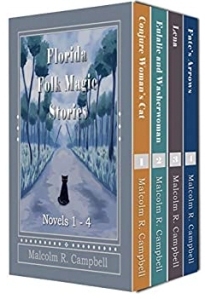 Malcolm R. Campbell is the author of the four-book Florida Folk Magic series set in the early 1950s when the Klan was still active.
Malcolm R. Campbell is the author of the four-book Florida Folk Magic series set in the early 1950s when the Klan was still active.




